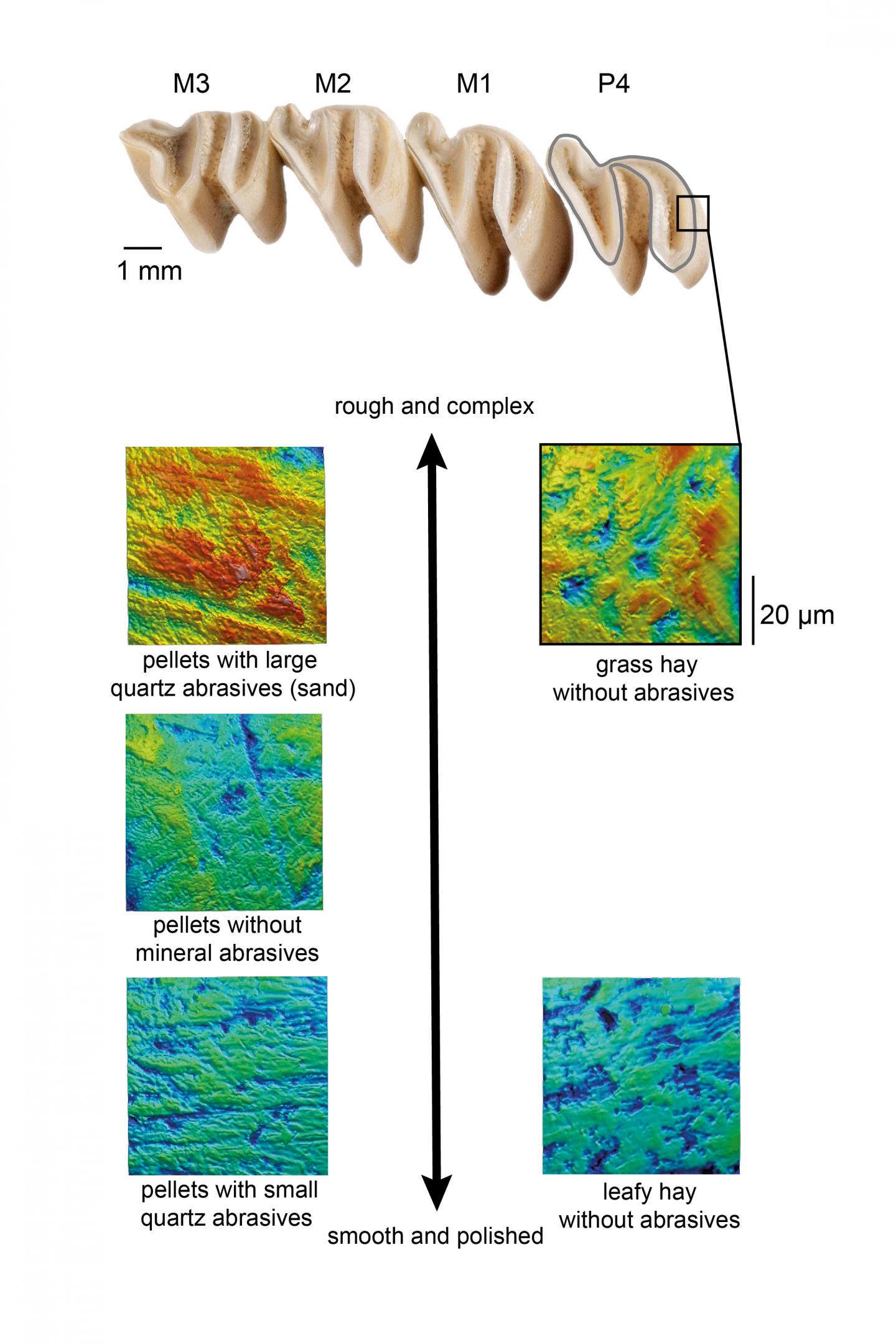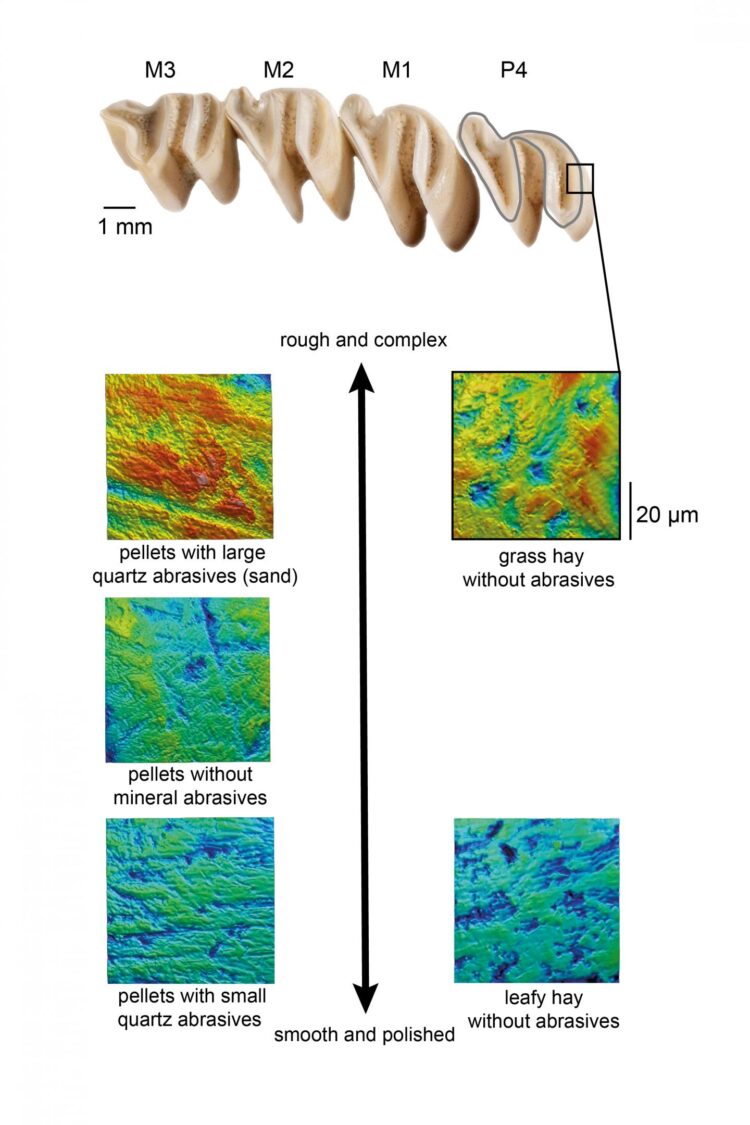Research results presented by paleontologists of Mainz University allow for more accurate conclusions on the nutrition and habitats of extinct herbivores

Credit: ill./©: Daniela E. Winkler
Mineral dust ingested with food causes distinct signs of wear on the teeth of plant-eating vertebrates, which can differ considerably depending on the type of dust. This is what paleontologists at Johannes Gutenberg University Mainz (JGU) have discovered in a controlled feeding study of guinea pigs. As they report in the current issue of Proceedings of the National Academy of Sciences of the United States of America (PNAS), their findings could lead to a more accurate reconstruction of the eating habits of extinct animals as well as a reconstruction of their habitats. “Analyzing fossil teeth is a common method of drawing conclusions about the diet and habitat of certain animals, because it has long been understood that eating different plants, such as grass or leaves, can cause different wear patterns,” said Dr. Daniela Winkler of the Institute of Geosciences at JGU, the first author of the study. “However, there has been hardly any research into the extent to which the consumption of mineral dust contributes to this abrasion.”
Over several weeks, the researchers fed 12 groups of guinea pigs with essentially the same plant-based pellets which contained different types and amounts (zero to eight percent) of natural mineral dust. The researchers then used a high-resolution microscope to examine the surface of the tooth enamel of each animal’s molars. “We were able to identify some significant differences,” added Winkler. For example, larger quartz particles (sand grains) caused severe abrasion on the enamel surface. The same applied to volcanic ash, which, due to its sharp edges, also produced a more irregular wear pattern. Small quartz particles generated a smooth, almost polished surface. On the other hand, there were no subsequent distinctive signs of wear features in the case of other particles. “Our results should improve the accuracy of diet reconstruction on the basis of fossil teeth,” concluded Winkler. To date, it has been assumed that smooth tooth surfaces are related to the respective animal feeding on leaves that, unlike grass, leave hardly any traces of wear on the tooth surface; hence, this animal would have lived in a forest environment. However, it now seems possible that smooth tooth enamel wear patterns could have also developed because the animal ate grass, for example, to which tiny quartz grains were attached. These particles would have eliminated any irregularities on teeth, leaving an even, polished surface. “It is normal that animals ingest mineral dust along with their food,” said Winkler. This is even more likely to be the case the drier the habitat is and the closer the food is ingested to the ground.
The study was undertaken as part of the Vertebrate Herbivory research project led by Professor Thomas Tütken of the Institute of Geosciences at JGU, which is funded by a Consolidator Grant from the European Research Council (ERC). The study also involved researchers of the Clinic for Zoo Animals, Exotic Pets, and Wildlife at the University of Zurich, of Leipzig University, of the Max Planck Institute for Evolutionary Anthropology in Leipzig, and of the Center of Natural History at Universität Hamburg.
###
Read more:
https:/
https:/
https:/
Media Contact
Dr. Daniela E. Winkler
[email protected]
Original Source
https:/
Related Journal Article
http://dx.





